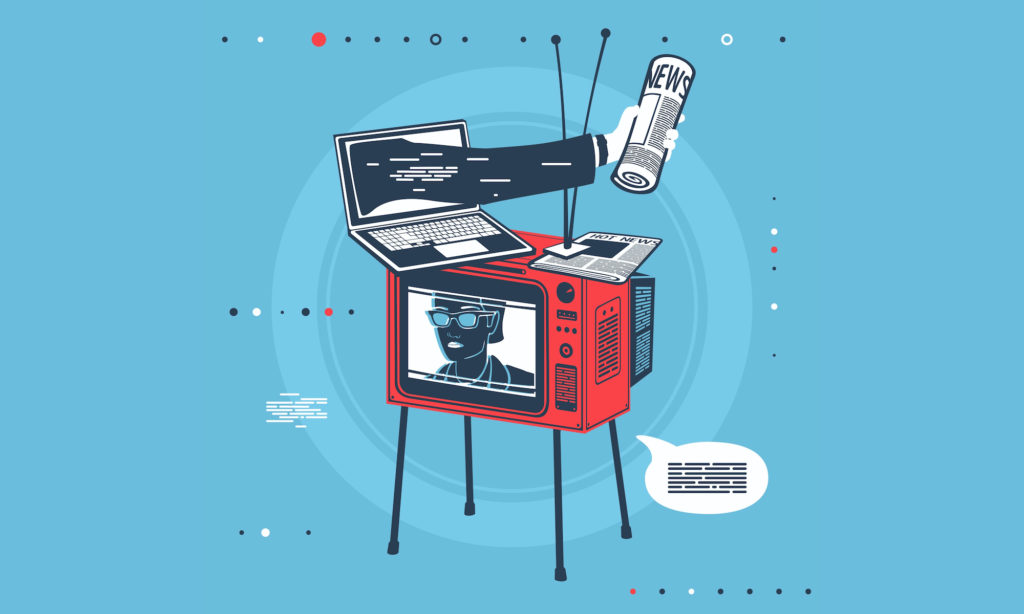
In the lead-up to the 2016 presidential election, many maligned the echo chambers they believed they saw taking over social media: People with like-minded friends were all sharing content with the same political bent, amplifying a singular set of messages, and leading to greater polarization overall.
But according to research led by Penn Integrates Knowledge University Professor Duncan Watts, just 4% of Americans actually fall into such echo chambers online. The number for television, however, is much higher, with 17% of people in the United States consuming TV news from partisan left- or right-leaning sources alone, news diets they tend to maintain month over month.
The team, which included Watts, Homa Hosseinmardi, and doctoral student Baird Howland of Penn, Daniel Muise of Stanford University, and Markus Mobius and David Rothschild of Microsoft Research, shared their findings in Science Advances. The researchers say the results point to television as the top driver of partisan audience segregation among Americans.
“If you think about where people are getting their news, it’s five to one from TV versus online,” says Watts, who has appointments in Penn’s School of Engineering and Applied Science, Annenberg School for Communication, and Wharton School. “If you’re worried about why people believe what they believe, you really need to look at what they’re watching on television.”
Comparing TV and online news
The work is part of the Penn Media Accountability Project from Watts’ Computational Social Science Lab. “One of our main goals is to take a broad view of the information ecosystem and ask questions about the relationship between information and misinformation,” Watts says. “The media produces information, people encounter and consume it, and it has some effect on them, which may or not may result in increasing polarization or diminishing trust in institutions.”
A paper he and colleagues published in 2020 in Science Advances showed that television news viewing far outpaces news consumption online. Yet no one had closely analyzed the former on its own or in comparison to social media and other Internet-based news sources. So, the Penn team decided to look at source diversity of TV news viewing.
They wanted to understand whether people watched a mix of programs with a range of political angles or only those that aligned with their own beliefs. In other words, did audiences fall into echo chambers, which the researchers defined in this case as more than 50% of news coming from either left-leaning or right-leaning sources alone.
Though the 2016 presidential election had heightened general awareness of the concept, a debate within the research community had arisen several years prior, following publication of a book called “The Filter Bubble.” “The thesis of that was that online algorithms steer users into these filter bubbles where they only get information that confirms what they already believe,” Watts says. “This was a claim that struck many people as plausible, and the idea of filter bubbles became commonplace.”
Yet subsequent research found they weren’t actually all that common online. “Filter bubbles or echo chambers, to the extent they exist online, apply at most to a small percentage of the population,” Watts says. “But no one had compared online to TV.”
Continue reading at Penn Today.
